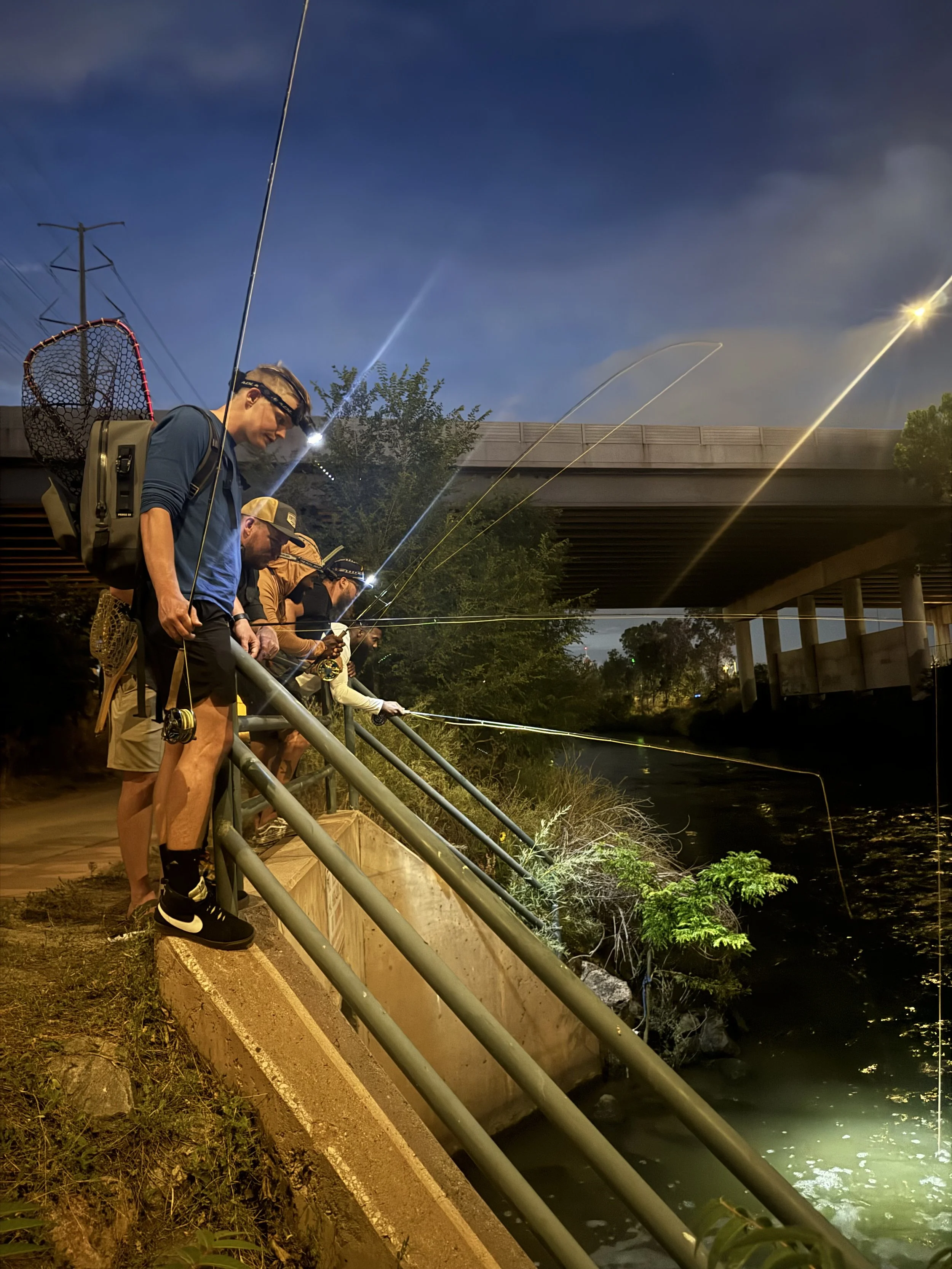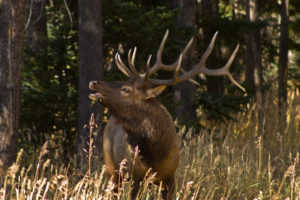How long have you been a TU member? I have been a TU member for 10 to 15 years or more and a local TU chapter board member since 2014.
Why did you become a member and what chapter are you involved with?
I became a TU member to stay current on the issues and challenges that we face at our local chapter level and on our local waters as well as regionally (western states).
What made you want to become involved with TU?
I wanted to get involved with a good cause and volunteer my time. I chose this opportunity since I enjoy fly fishing and would like to see our rivers and water systems protected for future generations.
What is your favorite activity or project that you have done with TU?
 We have done several activities at our local chapter level since my short involvement. Projects include river restoration, replanting of vegetation, supporting youth in fly fishing activities, youth fly fishing camps, etc. I think one of the most important activities that our chapter has supported is youth education and river conservation, fly fishing and fly tying. I helped recruit Bennett Colvin, who is a middle school teacher with years of fly fishing experience and assisting youth in the program. He has done a tremendous job here locally as our chapter's Youth Coordinator. He has organized week-long youth fly fishing conversation and education camps here locally. He has a strong following of middle school students that show up to tie flies in the morning before school starts. Bennett is really our “Shining Star”.
We have done several activities at our local chapter level since my short involvement. Projects include river restoration, replanting of vegetation, supporting youth in fly fishing activities, youth fly fishing camps, etc. I think one of the most important activities that our chapter has supported is youth education and river conservation, fly fishing and fly tying. I helped recruit Bennett Colvin, who is a middle school teacher with years of fly fishing experience and assisting youth in the program. He has done a tremendous job here locally as our chapter's Youth Coordinator. He has organized week-long youth fly fishing conversation and education camps here locally. He has a strong following of middle school students that show up to tie flies in the morning before school starts. Bennett is really our “Shining Star”.
I know you won’t tell me your top spot, so what is your second favorite fishing spot or favorite fishing story?
One of my favorite local areas to fish is on the Yampa River just south of town (Steamboat Springs). In 2002, Our chapter along with the Yampa Valley Stream Improvement Charitable Trust and the Colorado Division of Wildlife partnered on a project to clean up an areas south of town now called the Chuck Lewis SWA. This section of river was a part of a ranch that the ranch owners had placed old cars along the bank for erosion control. Needless to say, a lot of work from many folks went into clearing the old cars, restructuring and revegetating the river banks to improve the health of the river. This river section is now a favorite of many locals and out of town guests.
What does being a part of TU mean to you?
 I would like to think that my being involved in our chapters activities is making a difference. I hope that my small part supporting our chapter will continue a tradition of common love for our river system as well as promote continued preservation of rivers, streams and lakes around Steamboat Springs.
I would like to think that my being involved in our chapters activities is making a difference. I hope that my small part supporting our chapter will continue a tradition of common love for our river system as well as promote continued preservation of rivers, streams and lakes around Steamboat Springs.
What else do you do in your spare time or for work?
My occupation is that of a Home Inspector, Energy Auditor, and most recently I have become interested in aerial photography flying drones. I enjoy spending time with my family outdoors fly fishing, camping, rafting, motorcycle riding (dirt & touring). I have two sons who are both Eagle Scouts. My oldest (21 yrs) is in the Army National Guard and a local firefighter/EMT. My youngest is a junior in high school with plans to go to college after graduating. My lovely wife of 28 years is an accountant with Routt County.






 Included in the presentations from National TU Staff was the keynote speaker at the Saturday Night Banquet, TU President and CEO, Chris Wood. Wood spoke about the future of TU in the midst of an uncertain political climate. Wood reassured everyone that TU will continue to not only defend our prized fisheries and public lands but go on the offense and fight for protections of areas. We will also make sure we are working for our trout and salmon as opposed to working party lines.
Included in the presentations from National TU Staff was the keynote speaker at the Saturday Night Banquet, TU President and CEO, Chris Wood. Wood spoke about the future of TU in the midst of an uncertain political climate. Wood reassured everyone that TU will continue to not only defend our prized fisheries and public lands but go on the offense and fight for protections of areas. We will also make sure we are working for our trout and salmon as opposed to working party lines. The banquet also included the presentation of chapter, volunteer leadership, and partner awards. The awards included:
The banquet also included the presentation of chapter, volunteer leadership, and partner awards. The awards included: The weekend started off with the a Cast N' Sip event where guests were treated to a "Seven Deadly Sins of Casting" presentation by Johnathan Walters. Afterwards everyone could apply their newfound knowledge and participate in casting games like tic-tac-toe. Beer was provided for the event by
The weekend started off with the a Cast N' Sip event where guests were treated to a "Seven Deadly Sins of Casting" presentation by Johnathan Walters. Afterwards everyone could apply their newfound knowledge and participate in casting games like tic-tac-toe. Beer was provided for the event by 
 Colorado TU’s Board of Directors has voted to support HB 1321. Since 2009, CPW has cut or defunded fifty staff positions and sliced $40 million from the wildlife budget. Without new revenue, more painful cuts are inevitable.This bill gives the Parks and Wildlife Commission authority to set fees, within a cap set at a 50% increase from current levels. Importantly, it allows future license fees to be adjusted gradually over time to keep up with inflation rather than needing the legislature to approve larger increases every few years. The bill would also allow out-of-state fishing license fees for Colorado to be increased to bring Colorado’s pricing in line with peer states like Montana, Wyoming, and Utah. A senior fishing license (not more than half the regular price) would also be re-instituted. The bill also would add a new sticker and fee program for boats, to help finance inspections for aquatic nuisance species.
Colorado TU’s Board of Directors has voted to support HB 1321. Since 2009, CPW has cut or defunded fifty staff positions and sliced $40 million from the wildlife budget. Without new revenue, more painful cuts are inevitable.This bill gives the Parks and Wildlife Commission authority to set fees, within a cap set at a 50% increase from current levels. Importantly, it allows future license fees to be adjusted gradually over time to keep up with inflation rather than needing the legislature to approve larger increases every few years. The bill would also allow out-of-state fishing license fees for Colorado to be increased to bring Colorado’s pricing in line with peer states like Montana, Wyoming, and Utah. A senior fishing license (not more than half the regular price) would also be re-instituted. The bill also would add a new sticker and fee program for boats, to help finance inspections for aquatic nuisance species. 
